Missing the Old Civic Motor Pool… But Not CVCC Smog-Check Hell
There was a time in the late 1990s and early 2000s when I had two 1985 Civic hatchbacks and an ’85 CRX, all at the same time. They were fun to drive, sipped gas, rarely malfunctioned, and Pick-Your-Part in Hayward always had at least a half-dozen compatible parts donors on the yard. Truly, it was Civic Utopia.
Road Trips: Cruising Oakland In a 40-Year-Old 1951 Chevy
I’ve been scanning a lot of my old 35mm negatives and slides for the ongoing 1965 Impala Hell Project series (using a time-slows-to-crawl 1999-vintage SCSI film scanner), and I ran across this series of panoramic black-and-white photos that I shot in the early 1990s.
Why Saab Is Screwed (And What To Do About It)
Bertel’s provocative piece on SaabUnited’s complex relationship with Saab and Vladimir Antonov has drawn a predictable response from the Saab faithful, who have rushed to defend their beloved but troubled brand as well as its mysterious Russian “savior.” The outburst of anger at TTAC, though harsh to the point of almost blaming TTAC for Saab’s sorry state, is nothing new around these parts: TTAC has long angered the die-hard fans of many auto brands by calling for (or simply covering) the demise of brands that have outlived their usefulness to the market. Even the most basic understanding of TTAC’s history explains away the now-popular (in certain corners) theory that this site has a personal vendetta for Saab. On the other hand, perhaps we’ve been too focused on day-to-day developments to properly make the case for why Saab, sadly, needs to die. Luckily the reasons for Saab’s inevitable demise are not difficult to understand…
Look At What I Found!: Packards Return to the Packard Proving Grounds Test Track – W/ Video
We’ve all seen too many pictures and videos of the magnificent ruin that was once the Packard plant on Detroit’s east side. It turns out that there’s a Packard site in the Detroit area that’s not a ruin, the Packard Proving Grounds in Shelby Twp. about 15 miles north of Eight Mile Road. Like the Packard plant on East Grand Blvd, Albert Kahn designed all the original Packard buildings on the proving grounds site, including a tudorish looking lodge where the facility’s manager and his family lived. It may be the only place where Kahn designed both residential and industrial buildings. It was built in 1927 at a cost of over a million dollars. Packard used the facility to develop and test their cars, aviation engines (there was a small airfield inside the big oval track – Charles Lindbergh visited the site), and also for publicity and marketing. The proving grounds even had a role in the Arsenal of Democracy. Chrysler used the facility during WWII to test Sherman tanks, erecting a building used to service the tanks that were tested inside the paved oval.
Additional video after the jump.
Long Form Saturday: First Ride
I was four the first time I rode across the country, from Menlo Park to Cambridge, sharing the back of the 1950 Studebaker with my older brother, Tom, and Mab, the 75 pound Airedale. Mab sometimes stretched across the back seat, pushing us onto the floor, but I digress, partly because I want the reader to know that I actually remember that trip. I also remember the aneurism in the tire, in Utah, and my fear as we approached the Holland tunnel, which my father had explained went under water, and my amazement as we sped dry through that marvel.
Other automotive firsts…
Fresno, 1938: Irrigation-Ditch-Jumpin' Hupmobiles Compete In Old Hack Race
Imagine California’s Central Valley with no personal-injury attorneys and a glut of sub-50-buck Model Ts, Essexes, and Oaklands.
Live Report! TTAC Shows You All The American Cars In Japan! (Gobs And Gobs Of Whacky Pictures!)
Certain misguided members of the not-so-mainstream media perpetuate the myth that American cars are unsalable in Japan, that nobody wants them, that they are “dasai” or uncool. Nothing could be farther from the truth. The Japanese love American cars so much that they lay on a big festival a few times of the year, dedicated to the celebration of the great American car. I blew TTAC’s travel budget and went all the way to Yokohama to attend today’s Amefes, and to snap a lot of pictures of a lot of old and new American cars in Japan.
Right this way, dozo…
Class of 1965: When GM Had Eight V8 Engine Families
It’s hard to believe that The General was once so dominant that it sweated over the fear of being split up by the federal government via antitrust regulations, and that GM’s divisions cranked out more than 25 separate passenger-car engine types (counting Opel and Holden models) during the decade. Why, The General boasted ten different car V8s during the 1960s (not counting earlier models intended for warranty replacements, industrial use, etc); eight of those engines were being built in 1965 alone. Imagine a manufacturer today so mighty that it could offer eight totally different V8 engines (in 14 displacements) for sale in its new cars!
Orange County, 1989: The Dodge A100 That Started It All
There’s a reason that I spent decades thinking that, someday, I’d have my very own Dodge A100 project. That reason is this $50 A100, which survived a wild-eyed road trip through the heart of the civil wars in mid-80s El Salvador and Nicaragua. Going through my old 35mm negatives the other day, I found a few portraits with the A100 as backdrop.
BBC Honors the Argentine Ford Falcon
When I researched the subject of cars built in relatively unchanged form for 20 or more years, the only American machine that met my criteria was the first-gen Ford Falcon (no, the Model T was not built during 20 model years and, no, the Ford Panther and GM B platforms changed too much to be considered single models). As late as 1991, car shoppers in Argentina could step into a Ford showroom and choose between a new Falcon and a new Sierra XR4… or they could walk across the street to Peugeot and drive out in a new 504. How’s that for a set of choices?
The Cubafication Of America's Roads
There Is No Substitute For The Island That Rust Forgot
I photographed and posted a total of 578 old cars and trucks on the streets of Alameda, California, for the Down On The Street series before I moved to Denver and then left Jalopnik. Now I’m back in California for a LeMons race, and Alameda has been restocked with new examples of classic street-parked iron.
Was GM Design Head Bill Mitchell A Sexist Bigot?
A Look At The Swiss Car Industry. The What????
When you think about the Swiss auto industry, one thing usually comes to mind:
“What Swiss car industry?”
They nearly had one. The “Swatch Car” was pioneered by Swiss swatch-watchmaker Nicolas Hayek. It was killed by Ferdinand Piech, 5 seconds after he took the helm as CEO of Volkswagen. The Austrian Piech graduated at the Eidgenössische Technische Hochschule Zürich (ETH) in mechanical engineering, but even that didn’t keep him from exterminating the little Swiss critter at Volkswagen to save his own Lupo 3L (which also died.) Hayek turned to Daimler, the Swatch car became the Smart, Daimler took over, the Swiss car industry remained a dream.
But then, aren’t we forgetting Monteverdi?
Time Traveler '68 Impala SS Convertible Wakes Up In Denver
I see a fair number of total beater 1960s Detroit convertibles on the street, and nicely restored examples show up from time to time, but I’m not sure what to make of this clean-but-nowhere-near-show-quality Impala SS parked on a freezing night in downtown Denver.
How I Lost My Fanhood and Learned To Love Cars On The Merits
The last time I attended a ball game, JFK was running for president. My older brother tells me that Mickey Mantle hit a homer. He would remember. Tom was a baseball fan.
I loved cars, not sports. At age six, I asked my mother to count the days until I could drive. I loved especially the elegantly maternal Mercurys. Nonetheless, I saw brands as classification systems, like the species of my beloved butterflies, rather than as foci for tribal loyalty, like my brother’s Yankees.
But fandom–the word derives from “fanatic”–is a holy grail of marketing, and I was not immune. At age nine, I sacrificed my objective appreciation of cars on Madison Avenue’s altar. In choosing my favorite car, loyalty trumped aesthetics. We had a Chevy.
Cammy Cruises California: Or How I Learnt To Stop Worrying And Just Drove On American Roads
Driving abroad was always too scary for me. It was a task I said I would never do, along with “walk behind an elephant with diarrhoea” and “own a Chevrolet Aveo”. Every time I went abroad, be it, France, Italy, Hong Kong, China etc. their highway systems just frightened the life out of me. On holiday, I’d always use taxis and public transportation. Until I went to California. 2 years ago, I was invited to spend a week with friends (well, it was actually “friends of friends” but a holiday in California is still a holiday in California). So, I went through the usual pre-holiday routines.
Panther Appreciation Finale: The Stairway To The Stars In An MGM
The activity board in my 2nd grade classroom was covered in bright paper, shiny border trim and colorful words: typical stuff from a teacher supply store. Words like “Wow!” and “Excellent!” to make light of an exemplary student’s work. But they were also adjectives for my latest automotive affection. A vehicle I hoped, for weeks, that my parents would surprise me in when the bell rang. That car was a new, 1984 Mercury Grand Marquis “LS” sedan.
Panther Appreciation Week: Defining Panther Love
As someone who has driven over 300,000 non-livery, private-owner miles in various iterations of Ford’s Panther, TTAC’s Panther Appreciation Week struck a bittersweet chord for me. I’ve enjoyed seeing this versatile vehicle-from-another-era get the admiration and respect I believe it deserves, and the peek at the other side of the philosophical coin – courtesy of some Best & Brightest commentators (and Paul) – has also been interesting. But this tribute to the platform’s imminent demise has saddened me, as it highlights how the Panther has represented such a stoic constant on North American roads for so many years. Regardless, change is the only true constant, and it won’t be long before the pride of St. Thomas Assembly is irretrievably crushed by the ever-advancing juggernaut of modernity. Standing at the precipice of this retirement, I feel compelled to look at what the Panther has meant, both in my life, and in the market over these past three decades.
The Red Marquis, The Redheaded Girl, and the Red Mist
When my father arrived at the accident scene, I was huddled in the back of Mom’s Nissan King Cab 4×4, head between my knees, just about managing not to cry. My sixteenth birthday present, a slick, five-speed Datsun/Nissan 200SX hatchback, was broken nearly in half and skewed across the middle of Ponset Street. The parked car I’d hit, a Nissan Stanza, had been launched up the curb, past two houses, coming to rest in the lawn of the third house down. We didn’t know to call it drifting back then. We called it powersliding, and I’d been determined to master it on my first legal day behind the wheel. I’d been doing nearly sixty miles an hour, full opposite lock, in some vague control of the two-tone Datsun, when I realized that it was legal to park a car right where I was headed, and that somebody had done so.
The old man appeared in the window of Mom’s truck. I couldn’t look at him.
“You okay?” he inquired.
“Yes, Sir.” There was a pause.
“Don’t expect to drive again. No time soon.”
“No, Sir, I don’t.” And, in fact, it was a year and a half later before I got another car. That car was a 1980 Marquis Brougham Coupe. Blood red on the inside and out. White Landau roof. Two thousand, two hundred, and ninety-nine dollars was what Dad paid. There wasn’t a straight panel on the car, and it ran down the road as crooked as the dealer who called it “a clean, two-owner example.” Maybe we got ripped off, but without the Marquis I wouldn’t have known Tanya.
Ur-Turn: On The Death Of The Classic Car
Ur-Turn is your weekly opportunity to contribute to TTAC. Every Saturday we select a different piece submitted to our contact form, and publish it as a showcase for the diverse perspectives of TTAC’s readers. Today’s contribution is a a meditation on the coming classic car crisis, from reader Matthew Betts.
Classic cars have been part of American car culture since the 1950s, when rat rods roamed the evening streets and gas contained heavy metal. As years have passed, those classics have given way to the over-restored muscle car and the garage queen time capsule. Those cars have held the spotlight for quite some time, probably because the kids of the 80s lusted after the cars of the 60s, much like their parents. The next step in the progression of the classic car will be Japanese and turbocharged group from the early 90s. This new wave can already be found creeping into auctions with prices on the rise.
After this wave passes, what will be next, if anything at all? While this may seem like a crazy question at first glance, there are several drastic differences between the cars of the last 10 years and the cars of yore that will make long-term car of them a nearly impossible goal. Some of these differences strike at the very core of classic car culture.
The Cobra And The Cheetah: A Muscle Car Tale (Part Two)
Part One of this piece can be found here.
Were it not for an act of God, the fecklessness of General Motors’ executives and the difference between a self-promoting Texan and a Californian willing to walk away from it all, the many Cobras you see, real and ersatz, would be joined by another predator, Bill Thomas’ Cheetah.
Developed with backdoor assistance from Chevrolet, the Cheetah was the Chevy powered answer to the “Powered by Ford” Cobra. A racing Cheetah was given one of the first Gen IV big block 396 Chevy “rat” motors made. Based around Corvette drivetrain and suspension components, and a not very robust tube frame, the Cheetah was covered in a body that is unforgettable.
Though the Cheetah only competed in a small number of SCCA races, winning 11 events while simultaneously developing a reputation for extreme speed but treacherous handling (caused by the flimsy chassis), its drop dead gorgeous body styling made it instantly memorable. The fact that the Cheetah came out in the mid 1960s, when scale models and slot car racing were hugely popular with teen baby boomers, didn’t hurt the car’s popularity.
The Cobra And The Cheetah: A Muscle Car Tale (Part One)
The Shelby 427 Cobra is a curious car. There are few vehicles that more worthily deserve the description iconic. The originals are so historically significant and rare that each is worth hundreds of thousands of dollars (and in the case of the six Daytona Coupes, millions), yet stylistically identical replicas are ubiquitous. Chances are, if you see a Cobra, it’s probably not real baby seal. Over the decades thousands of replica Cobras have been produced to varying degrees of fidelity by a variety of kit car and turnkey manufacturers. When Carroll Shelby realized that he couldn’t sue the replicar makers into submission, he decided to make his own “continuation series” Cobra replicas (in your choice of carbon fiber, fiberglass or original aluminum bodies). He’s also come to a licensing agreement with Superformance, who make superb Cobra and Daytona Coupe reproductions. I’m a big supporter of the idea of intellectual property, and Ol’ Shel is entitled to make a living off his name and accomplishments, but Carroll Shelby’s proprietary attitude towards the Cobra borders on the absurd.
Thirty Seven Years With An Amazon
[Ray Charlton has been a long-time TTAC reader (amazon ray) and has fed me numerous tips. He has offered to share the story of his experiences with his automotive companion of thirty seven years. TTAC always encourages reader submissions, and we are particularly interested to make this type of reader’s story a regular weekly column. It’s a great way to get to know each other better, and share our automotive-related passions, careers, crazy stories or?? And you’ll (eventually) be $50.00 richer. Send them to me at curbsideclassics@gmail.com. About 800-1200 words, and if it needs editing, I’m on it. I also need suggestions for a title of this series. PN]
It was October of 1973, and my seventeenth birthday. My father’s idea of the perfect gift was to give me his daily driver: a 1968 Volvo 122 Amazon. He had bought it new and now it had 74,000 miles on it. Well, needless to say I was mighty happy to get the car. But I’m even happier to have it still today.
Magazine Memories: Dreams Of Delorean
TTAC readers, the Best and the Brightest, seemed to have liked the first Magazine Memories so I started to sort and organize the boxes of old buff books in the basement, with an eye towards another column for you guys. The first piece was about a Sports Car Graphic from 1969, a golden age for both performance cars and auto racing. I thought it would be interesting, by way of contrast, to look at an era of less worthy automobiles, the “malaise era”, so named because of a speech given by Jimmy Carter during his presidency that attempted to address a sense of national lethargy. Though Carter never actually used the word malaise, the tag stuck. Looking at magazines from the middle of the Carter years, the winter of 1980-81, though, the cars were so boring and mediocre that I thought it’d be too much of a challenge to even joke about how boring and mediocre they were.
Farewell Mercury
If you scan the autoblogosphere on a regular basis, you’ve read some half-hearted eulogies to the best and worst of Mercury. Fair enough, as the Mercury brand deserves every one of those backhanded compliments: sharing too much content with a comparable Fords and (sometimes) sharing too many styling cues with the Lincolns means it couldn’t die off without a dig or two. And it is an easy target: aside from the (lead-sled) post war Yuppie clientele that inspired Mercury’s creation, the original sleeky-Sable and a few old Cougars, this was bound to happen.
But obviously my love for Mercury ( here, here, and here) means I’m not going to bury Mercury, but to praise it. And to make sure the brand remains in our collective consciousness just as long as it’s GM counterpart, Pontiac. Wishful thinking, Mehta?
Magazine Memories: Sports Car Graphic, November 1969
In the basement are boxes of historic newspapers and old car magazines that I’ve saved since the late 1960s. The oldest items date to the Detroit Tigers’ 1968 World Series victory and the Armstrong/Aldrin moon landing the following year. The automotive publications are mostly from the early 1970s through the late 1980s, primarily Road & Track and Car and Driver from the US and CAR from the UK, plus a few odds and ends.
While looking for the newspapers on the moon landing I came across the November 1969 issue of Sports Car Graphic. SCG’s content was aimed more at the string-back glove set and road racing fans than Robert Peteresen’s other titles like Hot Rod & Motor Trend. I guess SCG was staking out a niche between C&D and Autoweek. I believe that TTAC contributor, Stephan Wilkinson was an editor at Sports Car Graphic during the 1970s so perhaps he can give us some historical background on the publication.
Picking up and reading a 40 year old car magazine evokes a range of thoughts and feelings. The physical object is both an artifact as well as historical source material. Certainly there’s a sense of nostalgia, as well as curiosity to look at the table of contents for cool cars. You read an old magazine differently than you’d read one that came through your mail chute today. If you still subscribe to C&D or R&T, you flip past the TireRack ads as fast as you can. With an old magazine you savor even the advertising copy, wondering if IECO still makes Corvair parts or even exists. Thinking Francophonically, there is an enduring sense not of déjà vu but rather of plus que change.
Adventures Under the Hood
I’d been wondering if I’d damaged the fuel pump when I ran out of gas a couple of months ago, for the only time in my 350,000-400,000 lifetime miles. Sometimes, after coasting in gear I’d feel the Accord 5-speed subtly hesitate as I gently pressed the gas. But this morning, the engine seemed to be gasping for fuel, and the check engine light–a species which is well known to cry wolf–was blinking at me as if it really meant it. Instead of to the espresso joint, I headed to the local mechanic.
The Monster
The man’s wife, an actress who looked Scandinavian, called it “The Monster.”
“You’ve come for the Monster,” she said.
“Yes, I have,” I said. Meanwhile trying to figure out why she would call one of Pininfarina’s most beautiful Ferraris– the GTC/4– “The Monster.”
I say “most beautiful” but the Italians, with their ever more refined eyes for body shapes (both women and cars) called it “the hunchback with clown lips” because it had an ever so slight rise to the center of the rear deck lid, and up front there was a rubber bumper surround. Neither feature hurt the car’s looks but you know the Italians. They wanted things just right or they would find something to criticize.
I found out later on, once I took the car, it ate money. It wasn’t the cookie monster, but the money monster.
Happy 80th Birthday, Steve McQueen
Terrence Steven McQueen was born to a stunt pilot father and an alcoholic mother on this day in 1930. His father left them both halfway to Steve’s first birthday. In the ensuing years he would find a home on his Uncle’s farm in Indiana, be moved to Indianapolis and L.A. where he was shipped off to a Junior Republic by an abusive stepfather, lumberjack, be a Marine guard for President Harry Turman’s yacht and become the highest paid movie star in the world.
Thetruthaboutcars.com Celebrates Spring Equinox
March 20, 2010. Spring Equinox. Spring has sprung. How could Thetruthaboutcars.com celebrate the first day of spring 2010 better than with a concise pictorial history of springs?
Apart from tires and seats (which typically have their own springs, the seats, not the tires) the car’s suspension is what protects your (personal) rear end and spine from the rigors of the road. Apart from shock absorbers (which we’ll celebrate the minute we’ll find an appropriate season for shock absorbers), springs are an essential ingredient of your suspension. Springs come in three basic flavors.
Will No One Rid Me Of These Troublesome Baby Boomers?
Statistically speaking, it’s a little early to be ragging on the baby boomers. In addition to numerical advantages, the boomers also haven’t slipped fully into retirement, meaning mainstream culture will be stuck for a little longer in the era of unrepentantly rosy nostalgia. And though the pasturing of America’s second-greatest-by-default generation will be ruinous for little things like government entitlement programs, the benefits to important stuff like car design will be profound. Unlike subsequent generations, the baby boomers still had the privilege of living during the golden age of the automobile, a time before Detroit’s decline, the massive government regulation of safety and emission standards, and the general blandifying of the car. As a result, boomers bring a bizarrely retro-sensibility to the modern car market, not just for restored classics, and retro-muscle cars, but for the vehicles that brought an end to the era of Detroit Baroque. Which is where things get interesting.
The Truth About Why Chrysler Destroyed The Turbine Cars
The video showing the destruction of 46 of the 55 Chrysler Turbine Cars we posted recently generated lots of heated discussion. The key issue is, and has been for years, whether import tariffs played a material role in Chrysler’s decision. There is a wealth of sites and reprinted vintage articles dedicated to the TC, and the import duty conspiracy theory reoccurs throughout them. Interestingly, Wikipedia, which is not to be trusted in all things automotive, is the only source that throws some doubt on that story: “The story at the time that this was done to avoid an import tariff was incorrect[ citation needed].” Lacking that citation, it was time to do some further sleuthing, and either join the tariff theorists, or put a stake through it once and for all.
Feature: Five Automotive Passenger Pigeons
Passenger pigeons were the most common bird found in North America. So common that flocks numbering 2 billion were up to a mile wide and 300 miles long. In other words, the average North American in the 18th and 19th Century saw a lot of these pigeons. You could easily argue that a passenger pigeon sighting in 1812 was something on the same scale today as seeing mind-numbing crap on TV. Not a particularly noteworthy or unique experience. So what took the passenger pigeon down? It was a combination of things but the biggest factor was that these pigeons tasted pretty good (a lot like chicken) and they were plentiful-hence a cheap source of food.bThey were wiped out at the pace of millions per year, so the last documented passenger pigeon named Martha died on September 1st 1914. In other words, something the average American had seen every day was extinct in a matter of a few decades. Quick extinction of a very common species is not a phenomenon exclusive to Mother Nature because cars can disappear overnight too. Here are a few that will soon be joining that “whatever happened to…” list.
The Carless Generation
There is always going to be a generation gap. The term “generation gap” was coined in the 60s when it became evident that Baby Boomers had developed a whole new set of rules for themselves that put a significant chasm between them and their parents in terms of interests and values. Generation gaps will always define new generations and every generation will march to the beat of their own drum. For me, the gap got Grand Canyon wide when I read the LA Times piece by Martin Zimmerman that cited a J D Power study which indicated that Generation Y has less interest in cars. As a lifelong car guy who built an entire social world around cars I would have to ask; “Generation why?”
Editorial: Camaro Versus Camaro
The 1969 Camaro is an automotive icon. Because of this juggernaut tag there are tens of thousands of these late 60s pony cars restored or under restoration. The late Reverend Jimmy “drink the Kool-Aid” Jones would have been humbled by this kind of blind loyalty-the sole reason the 09 Camaro exists was GM’s critical need for a home run.
But which car is going to be more valuable in 2019? Even after 10 years of service as a daily driver?
Editorial: Collector Car Market: The Sky Hasn't Fallen; Just a Few Prices
"Cars for Comrades: The Life of the Soviet Automobile"
Editorial: Are New Cars Ruining Old Car Shows?
Editorial: The Importance of Being Stranded
Editorial: Nostalgia Ain't What It Used to Be. Or Is It?
In Praise of: Detroit's HVAC Engineering
Land of Hope and Glory
Czech It Out: 1965 Buick LeSabre 400
Autobiography: Road Trip to Wenatchee
“You’re free to go.” With those hackneyed words, the Goldendale police officer returned my license. They were the very same words I’d heard in my head just a few hours earlier. At one-thirty last Sunday, my older son Ted called: “If you can drop Will [(his brother) here by three, we can take him back with us to Portland for a few days.” Cabin fever was at 103. The ninety minute deadline to pick a destination and pack the xB was just the tonic I needed. Time to head for… (flings open the atlas)… Wenatchee!
400 Miles in a 1981 Corvette, Part 1
Autobiography: Corolla Memories
For me, driving bliss is all about the setting. Give me an empty road, spectacular scenery, good company and the freedom to explore without an itinerary or time constraints, and I’m in Heaven. Sure, a nice set of wheels enhances the pleasure. But if it came down to it, I’d take an inexpensive reliable car and an endless open road over a garage full of under-used toys that never really get off their leash. I knew the basic formula intuitively in my youth.
Steven Lang Gets a Woody (Wagon)
Autobiography: Hemi Love
What eye-candy poster was pinned up on your bedroom wall when you were thirteen? A black Lamborghini Countach sprouting numerous spoilers? Farah Fawcett-Majors with blindingly-white teeth? Metallica? KISS? What I gazed lovingly upon– whilst sprawled across my bed– was a giant detailed cross-sectional drawing of a Chrysler hemi engine. Thus was the spell that the mythical engine had on me.
Requiem for a Station Wagon
In Praise of: The '57 Chevy
If there’s any doubt that the ’57 Chevy is THE iconic American car, it’s been erased. Long the favorite with the hot rod and collector crowd, the classic Chevy has now attained automotive immortality: they’re making new ones again from scratch. For $180k, you can buy a brand new 1957 Bel Air Convertible assembled from reproduction parts. The story of how the ’57 Chevy (and its ’55 – ’56 predecessors) became a living legend is worth repeating, since it includes some lessons still relevant today.



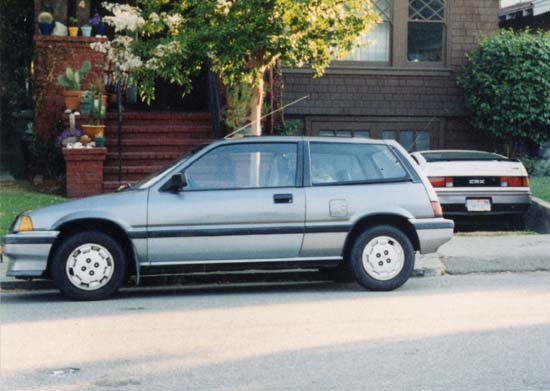



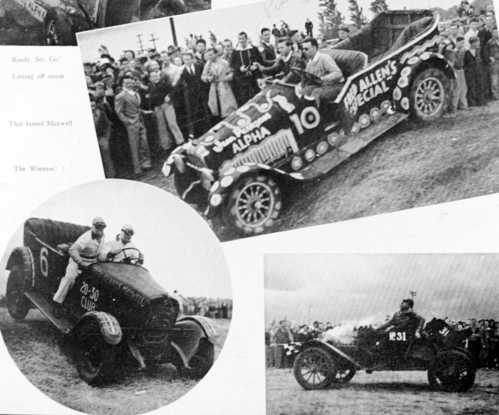
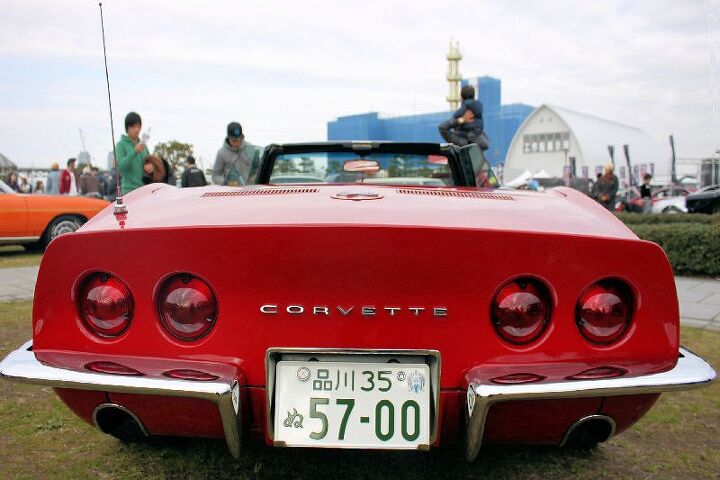





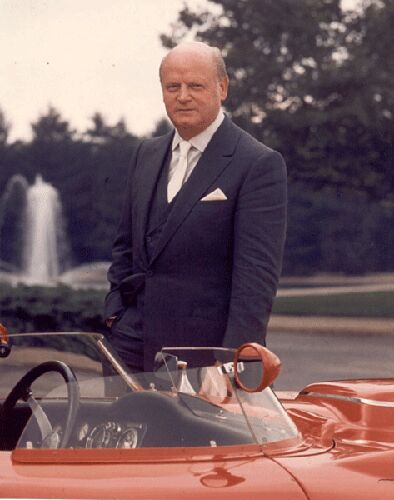
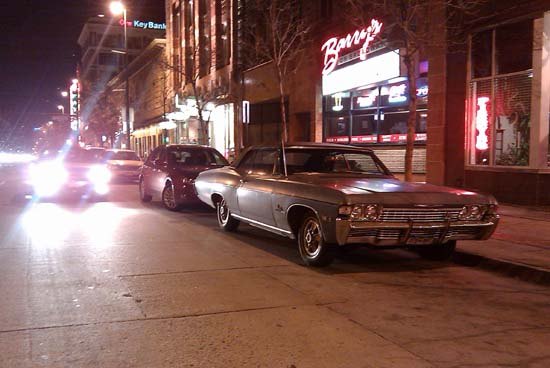










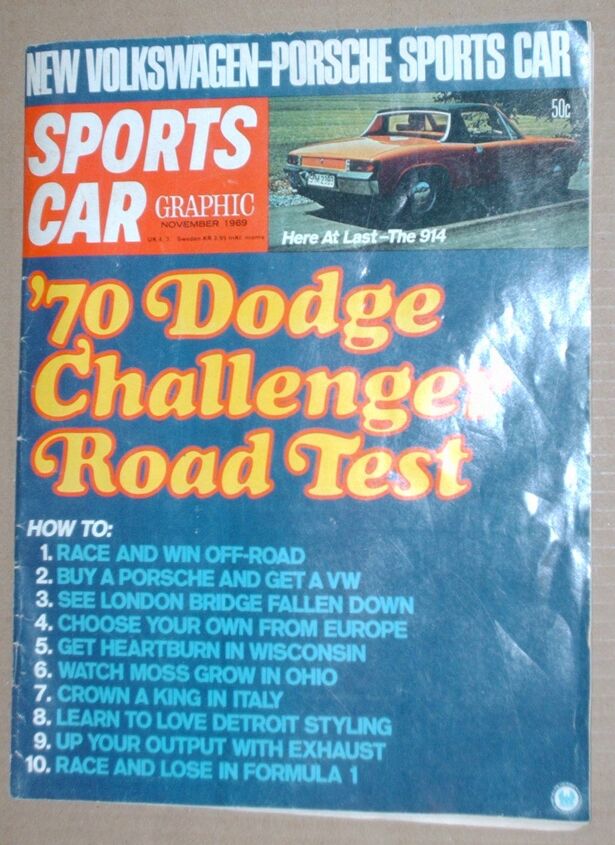
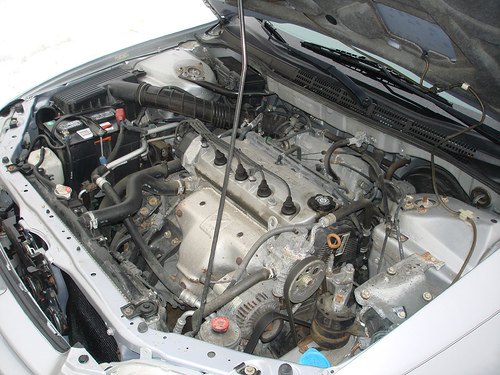


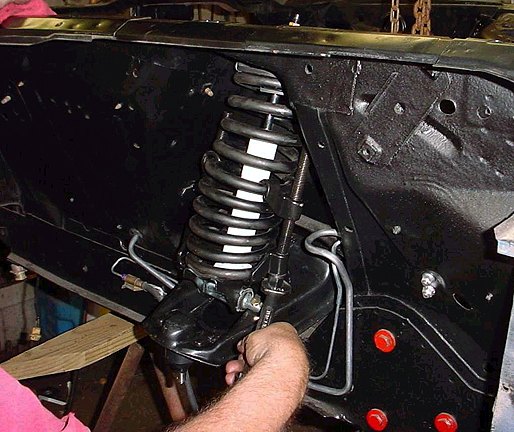







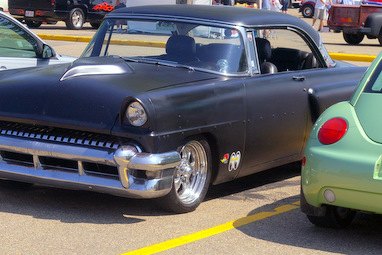








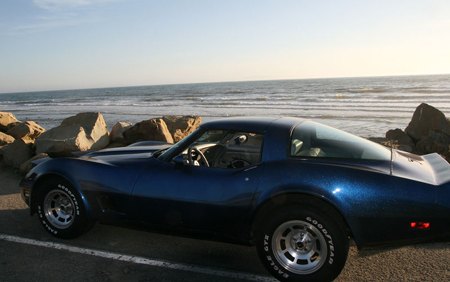
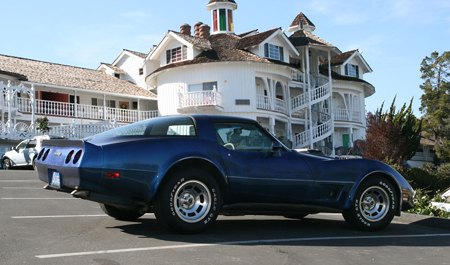


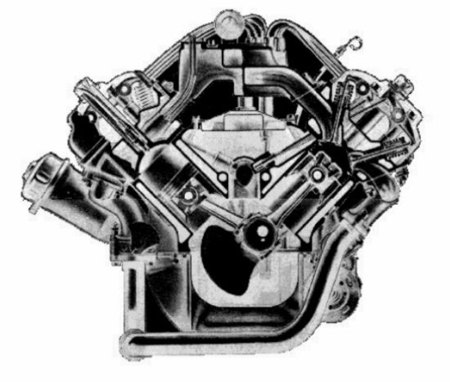
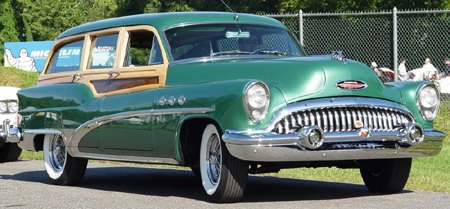
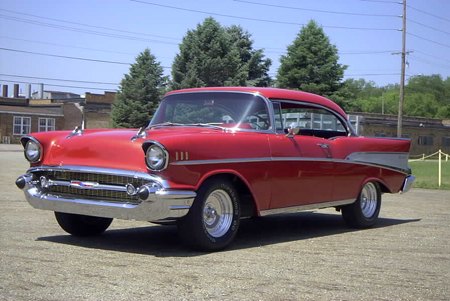
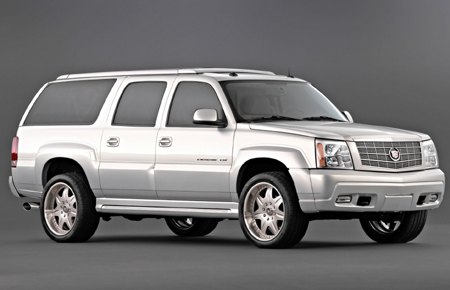


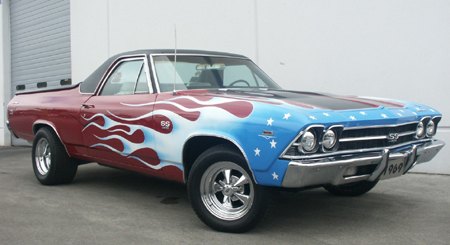














Recent Comments